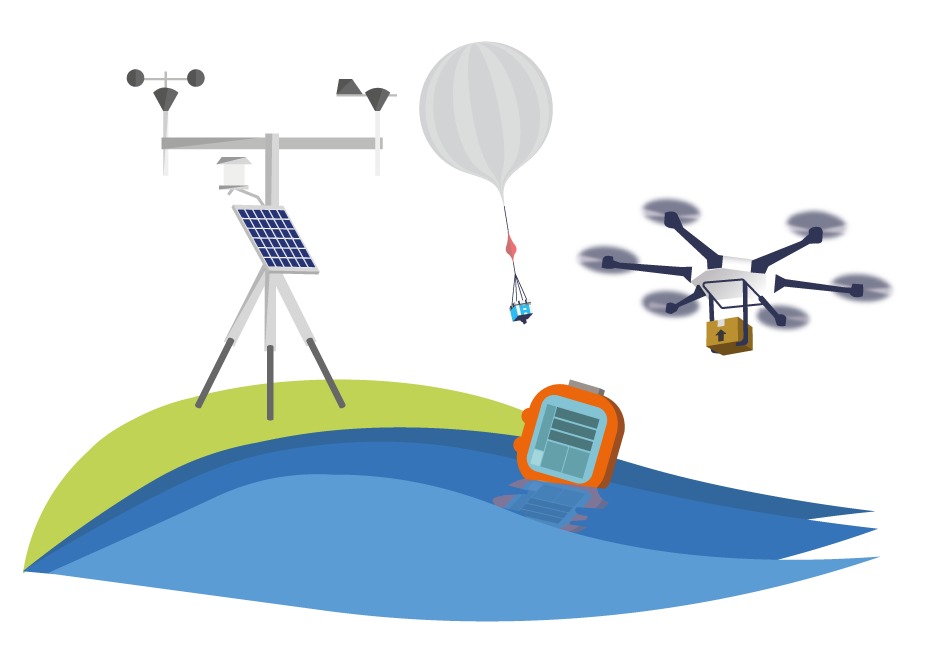Introduced in a paper published in 2010 in the American Meteorological Society, the AirCore has proven itself a robust atmospheric sampling device used with balloons and other airborne assets. Co-developed by the University of Colorado and the NOAA, the heart of the AirCore is 100m of thin, valve-tipped, and coiled stainless-steel tubing that stores gas but prevents its diffusion.
Initially, known amounts of trace gases called fill gas are pumped into the coil. The valves keep the fill gas inside the coil, but as the AirCore ascends through the atmosphere, the exterior pressure drops and the fill gas slowly escapes out.
At around 95,000 feet, the fill gas has almost completely left the coil and, in this current application by the NOAA team, a payload cutdown controller (PCC), which includes the AirCore and all of its auxiliary communications and logging equipment, is separated from a balloon and begins its parachuted descent.
As the PCC falls to the ground, the external pressure slowly builds up, forcing ambient air through a small magnesium perchlorate-filled canister (to dry the air) and into an open valve back into the coil. At ground level, the AirCore will have collected a vertical profile of undiffuse air, almost like a solid core. Back at the lab, the air is then pushed back out of the coil and analysed, ideally in AirCore pairs to make sure that accurate results have been gathered. The small amount of fill gas left in the AirCore indicates the top of the profile.
The PCC uses a Teensy 3.6 board (similar to an Arduino) that controls the cutter. The RockBLOCK itself is programmed to send out location data every five minutes throughout the flight, from power up prior to launch until about 30 minutes after landing. Two-way communication via the RockBLOCK’s SBD Library also gives the team the ability to cut the balloon loose early in flight. Powering the entire PCC for at least four hours are two rechargeable lithium 18650 2200mAh batteries in series.
Usually, a flight will go according to plan but on two occasions the RockBLOCK has gotten more than it bargained for. As Jack Higgs from the NOAA ESRL Global Monitoring Division explains:
“On one flight in Oklahoma last week, the balloon string became tangled with the parachute after cutting so the payload was carried up until the balloon burst. The RockBLOCK reached an altitude of 112,913 feet and low pressure of 5 millibar. It still transmitted its location message at that altitude without any problems. The package was also exposed to a low temperature of -75 degrees C during the flight. The electronics are housed in a Styrofoam package but are not heated. They only benefit from heat generated by the components.”
In another instance, the team had to borrow a canoe from a nearby homeowner and paddle out into the middle of a lake to retrieve the PCC. Amazingly, all the electronics were still operating, even though they were all wet inside. The RockBlock was transmitting its location every five minutes while saturated with water and floating horizontally in the lake.
The AirCore’s success has been duplicated on this side of the Atlantic, too. Academic institutions such as the University of East Anglia, University of Groningen, and the Finnish Meteorological Institute have used it for similar research.
More information on the AirCore can be found at the NOAA’s Earth System Research Laboratory.
Get in touch
With over 20 years experience in satellite tracking we have the knowledge and experience to ensure you are equipped with everything you need to make the right choice.

